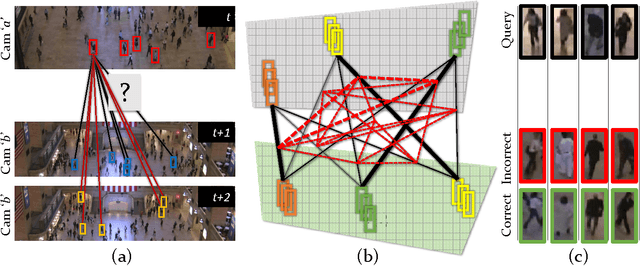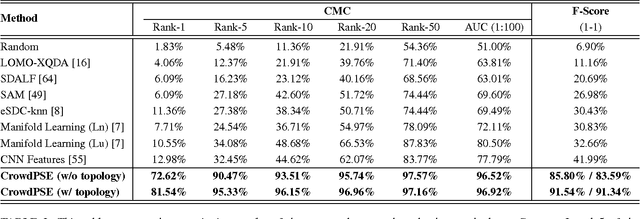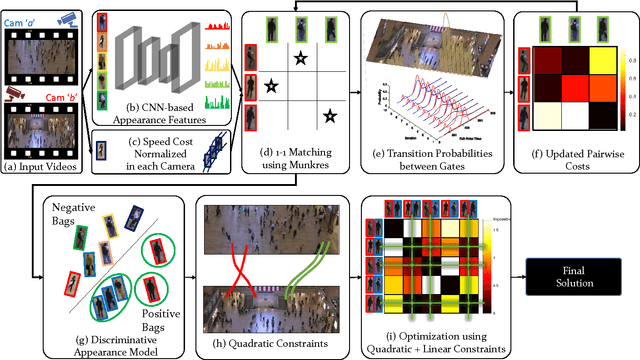Re-identification of Humans in Crowds using Personal, Social and Environmental Constraints
Paper and Code
Dec 07, 2016



This paper addresses the problem of human re-identification across non-overlapping cameras in crowds.Re-identification in crowded scenes is a challenging problem due to large number of people and frequent occlusions, coupled with changes in their appearance due to different properties and exposure of cameras. To solve this problem, we model multiple Personal, Social and Environmental (PSE) constraints on human motion across cameras. The personal constraints include appearance and preferred speed of each individual assumed to be similar across the non-overlapping cameras. The social influences (constraints) are quadratic in nature, i.e. occur between pairs of individuals, and modeled through grouping and collision avoidance. Finally, the environmental constraints capture the transition probabilities between gates (entrances / exits) in different cameras, defined as multi-modal distributions of transition time and destination between all pairs of gates. We incorporate these constraints into an energy minimization framework for solving human re-identification. Assigning $1-1$ correspondence while modeling PSE constraints is NP-hard. We present a stochastic local search algorithm to restrict the search space of hypotheses, and obtain $1-1$ solution in the presence of linear and quadratic PSE constraints. Moreover, we present an alternate optimization using Frank-Wolfe algorithm that solves the convex approximation of the objective function with linear relaxation on binary variables, and yields an order of magnitude speed up over stochastic local search with minor drop in performance. We evaluate our approach using Cumulative Matching Curves as well $1-1$ assignment on several thousand frames of Grand Central, PRID and DukeMTMC datasets, and obtain significantly better results compared to existing re-identification methods.
 Add to Chrome
Add to Chrome Add to Firefox
Add to Firefox Add to Edge
Add to Edge